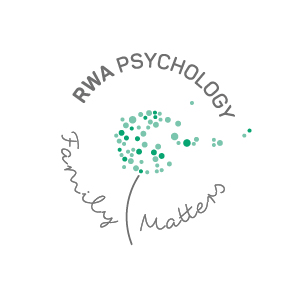I know I’m not the only psychologist to have sat in a session with someone and thought to myself, “Am I doing enough right now? Should I jump in with some strategies, or try to problem-solve this issue with them? After all, I just want to help them to feel better, right?” It’s pretty natural for us all to want to help people feel better when they’re upset, and often we grow up thinking that the best way to do this is by offering solutions and cheering them up.
I work in private practice and also as a school psychologist. At school I will often receive referrals like, “Please provide strategies to manage low mood/anger/stress”. In my first few sessions with someone I will start by just simply asking questions, listening, validating, and developing a relationship with them…so not providing any explicit “strategies” just yet! But teachers will then tell me that the student walked back into their class appearing calm and happy. Hang on, what’s happening?! I didn’t give any strategies yet!
Parents may relate well to this feeling that we should jump in and “fix”. Of course, it is well intentioned. It’s hard to see someone in distress, and parents will try to do whatever they think will help their child feel better. But I hear from many teens that their parents tend to jump in too soon with advice-giving. And quite often teens tell me they’re not even looking for a solution! They just want to feel heard, and to not be alone with how they’re feeling.
` The concept is referred to in many types of therapy styles and parenting programs, such as the “Circle of Security” program by Bowlby (1980) and the “Emotion Coaching” process by Gottman (2011). Research from neuroscience and clinical therapy trials continually demonstrates that children move on faster from their negative emotions when they are with someone who makes them feel heard, understood, and allowed to feel that way (e.g. Siegel & Bryson, 2011; Rosanbalm & Murray, 2017).
So how to do it?
“Being with” involves a certain attitude and responses which convey the message that, “I am here, I hear you, I understand, and I care”. The opposite would be like “taking away” from someone’s experience, which can leave them feeling misunderstood, invalidated, and defensive. So here are some practical do’s and don’ts when someone is going through a difficult time:
Don’t (taking away):
- Downplay or minimise what they’re feeling (“It’s not that bad”)
- Try to find a silver-lining (“At least…”, or “Look on the bright side”)
- Tell them how you think they should feel (“You should be happy that…”)
- Speak from your own perspective or experience (“When I…”)
- Give advice (“You need to try…”, or “Stay strong”)
- Compare to others, or take the perspective of others too soon (“It’s hard for others too”, or “Everyone’s struggling with that”)
- Change the subject
Do (being with):
- Recognise and name their emotions (“You seem a bit down”, or “I wonder if you’re feeling…”)
- Give them your full attention (“I’m here and I’m listening if you want to talk about it”)
- Take their emotions seriously and let them feel that way (Don’t judge or act surprised if they are feeling differently to what you expected, just say “Okay” or “That makes sense”)
- Take their perspective (“What was that like for you?”)
- Acknowledge when you don’t know what to say (“I don’t know what to say, but I’m glad you told me”, or try acknowledging “I know there’s probably nothing I can say right now to make it better”)
- Acknowledge that you may not have the answers (“I might not know what will help right now, but I’m here for you”)
- Allow silence (you really are allowed to just sit there!)
Put simply, connection and acknowledgement can actually be enough to help someone who is going through a difficult time. And now, when people ask me about my work as a psychologist, I say “It’s such a privilege to be with someone who’s going through a hard time…so they don’t have to go through it alone”.
References and related videos
Bowlby, J. (1980) Attachment and Loss: Volume 1. Attachment. Basic Books: New York.
Gottman, J. (2011). Raising an emotionally intelligent child. Simon and Schuster.
Rosanbalm, K.D., & Murray, D.W. (2017). Caregiver Co-Regulation Across Development: A Practice Brief. OPRE Brief #2017-80. Washington, DC: Office of Planning, Research, and Evaluation, Administration for Children and Families, US. Department of Health and Human Services.
Siegel, D. J., & Bryson, T. P. (2011). The whole-brain child. London: Constable & Robinson.
Brené Brown on Empathy versus sympathy:
Megan Devine on How to help a grieving friend:

We've tailored the services at RWA Pyschology - Family Matters to all age groups from young children to adolescents and adults - and we have specialists in crisis, short/medium term counselling and longer term psychotherapy.
Call RWA psychology for an appointment with one of our psychologists.
